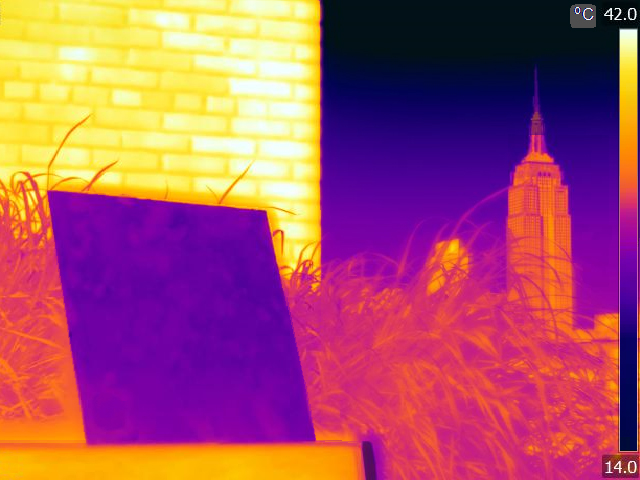The incredible paint that could keep our cities cool.
On September 27 2018, an article was published in the Science journal introducing an innovative ‘polymer paint’ that could be used to cool surfaces, particularly in cities.
This is revolutionary in a world where cities are rapidly expanding which creates a surplus of ‘urban heat islands’, essentially urban pockets of the world significantly warmer than the surrounding areas. These areas have an elevated temperature due to a heating effect that arises from multiple factors, such as dark building materials like concrete, traffic congestion and a lack of evaporation from plants. Urban heating is becoming a major global problem that has been linked to health issues in humans and animals, and also makes people use more energy for air conditioning.
Urban heating is becoming a major global problem that has been linked to health issues in humans and animals, and also makes people use more energy for air conditioning.
White paint is currently the most commonly utilised method of cooling buildings as it has a high albedo, meaning it creates the best surface for reflecting light so that buildings remain cooler. However, white paint still contains some pigment so it only reflects around 85% of sunlight, meaning the rest is absorbed by buildings and as a result they still heat up. You can begin to see why urban heating is still an issue!
So what is polymer paint? And why should you care? Basically, it is a foam-like coating which contains microscale air holes that reflect or scatter light of all wavelengths. These air holes replace the pigment in the white paint so less light is absorbed. As a result, between 96 and 99% of all incoming sunlight is reflected, causing much lower urban heating. The paint is a form of passive daytime radiative cooling (PDRC), which essentially just means surfaces are cooled by reflecting sunlight.
The paint is a form of passive daytime radiative cooling (PDRC), which essentially just means surfaces are cooled by reflecting sunlight.
According to the journal paper, polymer paint is most powerful in hot and tropical climates, although it is still effective in cooler areas. A study using the paint was conducted in the Arizonian desert and found that the coating reduced local temperatures by up to 60C (which is actually quite a lot!). The inventive paint can be used on any surface from buildings to vehicles to water tanks, but is yet to be implemented as it’s such a recent invention.
However, there are some issues with this idea. City-wide application would be a costly and time-consuming process that, honestly, many councils would likely not bother with. Another issue is that many people are likely to leave their air-con on despite local temperature differences, especially if the impact of the paint is only a few degrees.
So far we cannot really be sure how this one will turn out with it being such a new method, but the science is definitely there to suggest that polymer paint could be highly beneficial for supporting the expansion of urban areas in years to come!
Image source: physicsworld.com

